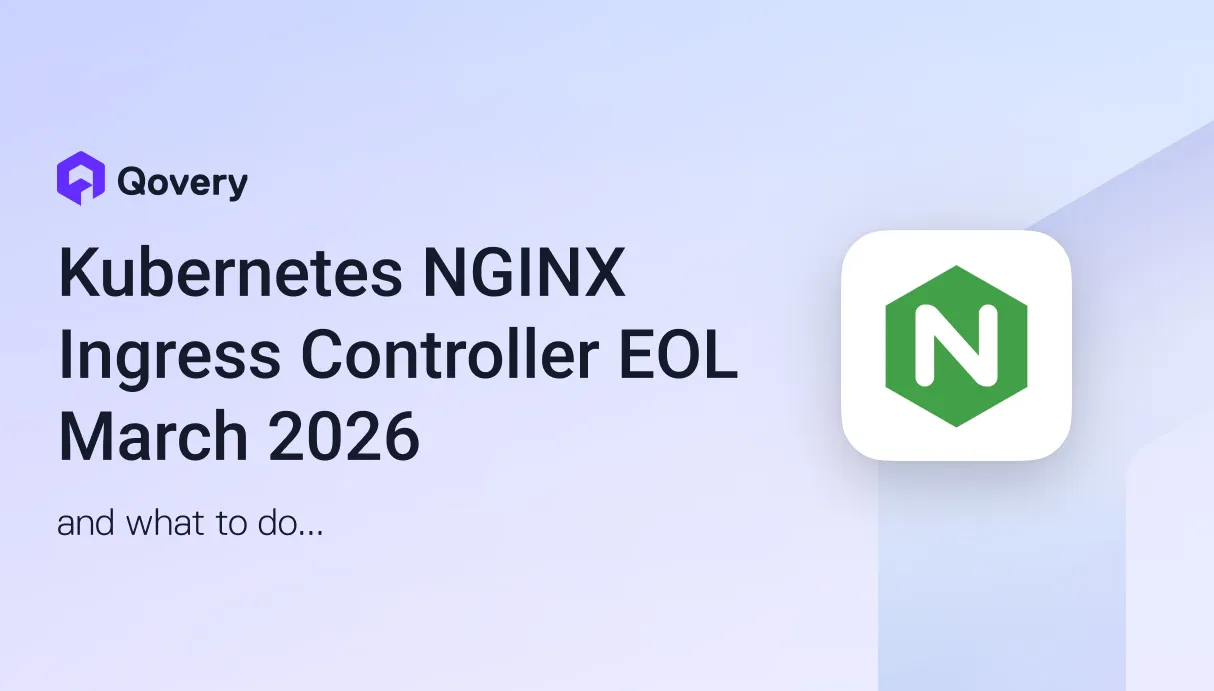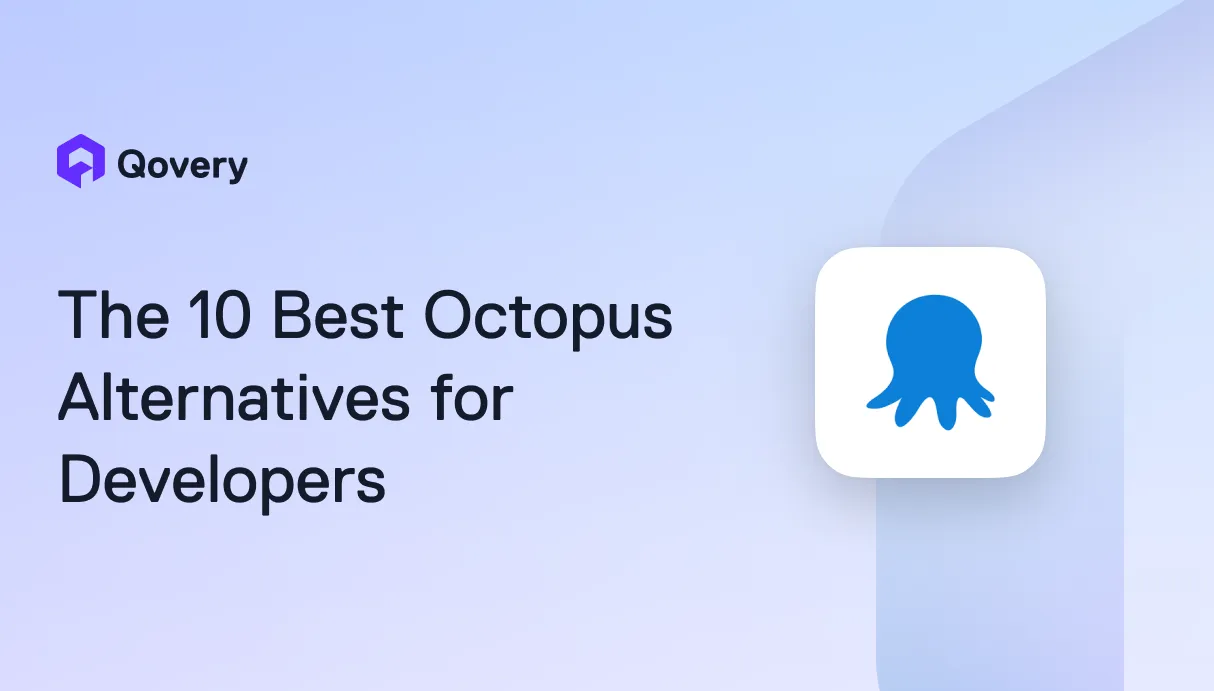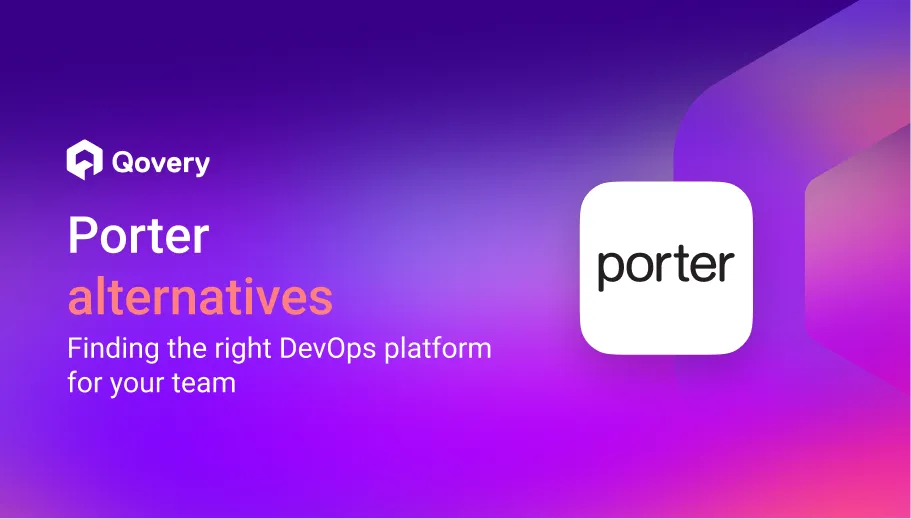


Heroku to AWS Migration: Common Challenges, Strategies, and a Seamless Solution



Key Points:
- Moving from Heroku to AWS involves significant hurdles. These include technical differences (PaaS vs. IaaS), financial costs (migration, resource allocation), skill gaps, time investment, and ensuring continuous user experience with minimal downtime.
- Organizations can migrate using DevOps automation tools (like Qovery), in-house experts, or external consultants. While in-house offers control and consultants provide expertise, automation solutions focus on efficiency, consistency, and scalability.
- Qovery simplifies Heroku to AWS migration by using an AI-powered DevOps agent to automate configuration, generate Infrastructure as Code (Terraform), and validate deployments. This speeds up the process, provides a Heroku-like developer experience on AWS, and offers cost and time savings.
As startups and mid-sized organizations evolve, their initial choice of cloud platforms often comes under scrutiny. Heroku, which is known for its simplicity and rapid deployment capabilities, serves as an excellent starting point for many. However, as applications scale and business requirements become more complex, limitations in control, scalability, and cost-efficiency become apparent.
Amazon Web Services (AWS) has emerged as a compelling alternative because it offers granular control over infrastructure, enhanced scalability options, and potential cost benefits. Despite these advantages, the migration from Heroku to AWS is not without challenges, as the transition involves managing technical complexities, financial implications, and ensuring operational continuity.
This article aims to provide a comprehensive guide for CTOs, DevOps engineers, and technical decision-makers who are planning this migration. We will examine the key challenges, explore practical migration strategies, and show how Qovery simplifies moving from Heroku to AWS.
Challenges and Limitations of Heroku to AWS Migration
Transitioning from Heroku to AWS introduces a range of challenges that require careful planning and execution. These challenges span technical, financial, and operational domains, and each presents unique obstacles that organizations must address to ensure a successful migration.
Technical Challenges
1. Architectural Differences
Heroku offers a streamlined Platform-as-a-Service (PaaS) environment, which abstracts much of the underlying infrastructure. In contrast, AWS provides Infrastructure-as-a-Service (IaaS) and grants granular control over resources.
Because of this shift, organizations must reevaluate their application architecture, as developers now need to manage aspects such as server provisioning, networking, and storage configurations. For example, transitioning from Heroku's managed dynos to AWS's EC2 instances requires setting up and maintaining virtual servers, configuring security groups, and handling load balancing manually.
2. Service Compatibility
Applications built on Heroku often rely on specific add-ons and services that may not have direct equivalents in AWS. To ensure compatibility and maintain application performance, teams must conduct thorough analysis and potentially modify code when identifying suitable AWS alternatives.
For instance, replacing Heroku's Redis add-on with AWS's ElastiCache involves configuring clusters, managing snapshots, and adjusting connection settings within the application code.
3. Data Migration Complexities
Transferring data from Heroku to AWS involves challenges related to data integrity, consistency, and downtime. If datasets are large or database structures are complex, specialized migration strategies may be required to minimize service disruption and ensure a seamless transition.
For example, migrating a multi-terabyte PostgreSQL database from Heroku to AWS RDS might require using AWS Database Migration Service (DMS) to replicate data in real-time, ensuring minimal downtime.
Financial Constraints
1. Migration Costs
The migration process can incur significant expenses, including costs associated with data transfer, infrastructure setup, and potential downtime. Organizations must budget for these expenses and also consider the long-term financial implications of operating within the AWS ecosystem.
For instance, data transfer fees can accumulate when moving large volumes of data out of Heroku, and setting up equivalent AWS services may involve additional licensing or provisioning costs.
2. Resource Allocation
AWS's flexible pricing model offers scalability but can lead to unexpected costs if resources are not properly managed. Because overprovisioning or underutilization of services can result in inefficiencies, careful planning and monitoring of resource usage are essential.
For example, leaving unused EC2 instances running or misconfigured auto-scaling groups can lead to unnecessary charges.
Resource and Expertise Requirements
1. Skill Gaps
Migrating to AWS demands expertise in various areas, including cloud architecture, security, and DevOps practices. Organizations may face challenges if their teams lack the necessary skills, which could lead to delays or suboptimal configurations.
For instance, configuring AWS Identity and Access Management (IAM) roles and policies requires a deep understanding of AWS's security model, which differs significantly from Heroku's more straightforward permissions system.
2. Time Investment
The migration process is time-intensive because it requires detailed planning, testing, and execution. To address unforeseen issues and ensure a smooth transition, organizations must allocate sufficient time and resources.
For example, setting up a new CI/CD pipeline using AWS CodePipeline and CodeBuild to replace Heroku's Git-based deployments can be a complex task that demands thorough testing and validation.
Maintaining User Experience
1. Minimizing Downtime
Ensuring continuous service availability during migration is critical to maintaining user trust. Strategies such as phased rollouts, blue-green deployments, and thorough testing can help minimize downtime and service disruptions.
For instance, implementing a blue-green deployment strategy on AWS involves running two production environments and switching traffic between them, which requires careful orchestration.
2. Performance Consistency
After migration, applications must maintain or improve performance levels. To meet user expectations and service-level agreements, teams must carefully configure AWS services, monitor performance, and optimize resources. For example, tuning AWS RDS parameters to match the performance characteristics of Heroku Postgres may be necessary to prevent latency issues.
Addressing these challenges is essential for a successful migration from Heroku to AWS. In the following section, we will explore various strategies to navigate this complex process effectively.
Options for Heroku to AWS Migration
Organizations that aim to migrate from Heroku to AWS have several strategic paths to consider. Each option offers distinct advantages and challenges, which depend on factors such as internal expertise, budget constraints, and desired control over the migration process.
1. Utilizing DevOps Automation Solutions (Qovery)
DevOps automation solutions like Qovery provide an automated approach to migration that significantly reduces manual intervention and potential errors.
Qovery's AI Migration Assistant analyzes existing Heroku applications, translates configurations, and generates the necessary infrastructure code that is tailored for AWS. Because this process is automated, it accelerates the migration timeline and ensures consistency across deployments.
When organizations use Qovery, they can benefit from:
- Efficiency: Automated processes minimize downtime and expedite the migration.
- Consistency: Standardized configurations reduce the risk of discrepancies between environments.
- Scalability: Qovery's integration with AWS services facilitates seamless scaling after migration.
2. In-House Migration with Internal Experts
Some organizations opt to manage the migration internally because they rely on their DevOps teams to plan and execute the transition. This approach offers complete control over the migration process so that organizations can implement customized solutions that are tailored to their specific needs.
However, this method requires:
- Extensive Expertise: Teams must possess deep knowledge of both Heroku and AWS environments.
- Resource Allocation: Significant time and personnel may be diverted from other critical projects.
- Risk Management: Since automation is limited, there is an increased potential for human error, which could lead to downtime or data loss.
3. Engaging Consultants or Freelancers
Hiring external consultants or freelancers can provide specialized expertise, which may accelerate the migration process. These professionals bring experience from previous migrations so they can offer valuable insights and best practices.
Considerations for this approach include:
- Cost: Engaging external experts can be expensive, especially for complex migrations.
- Knowledge Transfer: After migration, internal teams may face challenges when they try to maintain the new AWS environment without comprehensive documentation or training.
- Dependency: If organizations rely on external parties, they may develop ongoing support needs, which could affect long-term autonomy.
How Qovery Simplifies and Speeds Up the Heroku to AWS Migration
Migrating from Heroku to AWS presents a complex challenge, especially for teams that lack extensive DevOps expertise. Qovery addresses this challenge because it offers an automated, developer-friendly platform that streamlines the migration process, reduces operational overhead, and ensures consistency across environments.
AI-Powered Migration with Qovery's DevOps AI Agent
Qovery's DevOps AI Agent automates the migration process from Heroku to AWS. It connects to your Heroku account in read-only mode, retrieves application configurations, and translates them into AWS-compatible infrastructure code that uses Terraform and Dockerfiles. Because this process is automated, it minimizes manual intervention, accelerates the migration timeline, and reduces the potential for human error.

The AI Agent performs the following key tasks:
- Configuration Translation: It converts Heroku-specific settings into AWS-compatible configurations.
- Infrastructure as Code Generation: It produces Terraform files and Dockerfiles that are tailored for AWS deployment.
- Validation and Auto-Remediation: It validates the generated configurations and automatically resolves common issues so that deployments succeed.
- Secure Handling of Sensitive Data: It manages environment variables and secrets securely, which maintains data integrity throughout the migration.
This process enables organizations to migrate applications efficiently, and they often complete the transition in a fraction of the time that manual migrations require.
Seamless Integration and Deployment
After migration, Qovery facilitates seamless deployment on AWS because it abstracts the complexities of infrastructure management. It provides a Heroku-like experience so that developers can deploy applications without deep AWS knowledge. Qovery manages underlying services such as Kubernetes, networking, and storage, which enables teams to focus on application development and delivery.
Enhanced Developer Experience
Qovery enhances the developer experience by offering features such as:
- CI/CD Integration: It supports integration with popular CI/CD tools, which streamlines the build and deployment process.
- Deployment History and Rollbacks: It maintains a history of deployments so that teams can easily roll back to previous stable versions if needed.
- Autoscaling: It automatically adjusts resources based on application demand, which ensures optimal performance and cost-efficiency.
- Compliance and Security: It adheres to industry standards such as SOC 2 and HIPAA, providing a secure environment for applications.
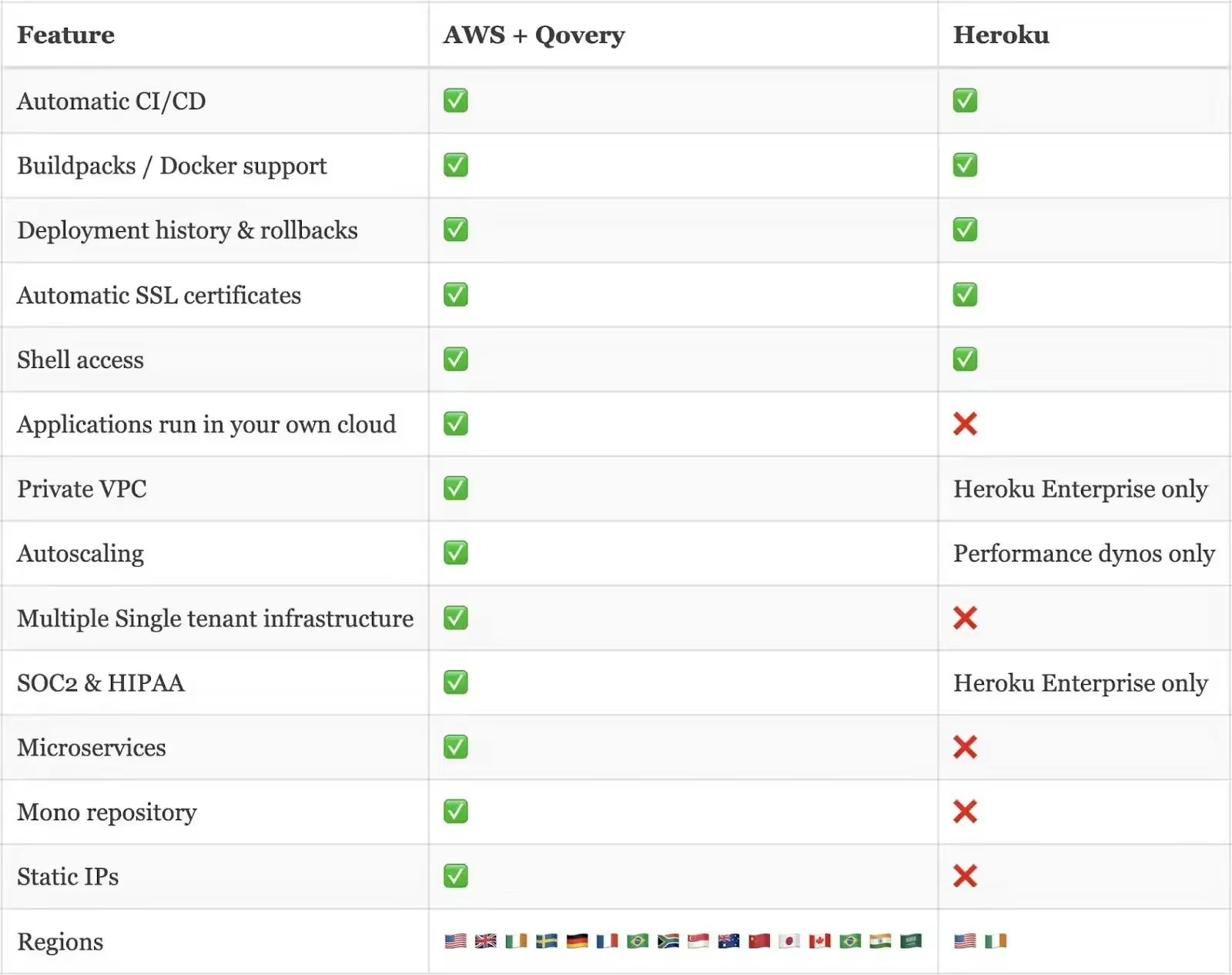
The Qovery Migration Process
High-Level Overview
Migrating from Heroku to AWS using Qovery is a streamlined process designed to abstract AWS complexity and replicate Heroku’s ease of use. Here's how it works at a high level:
- Project Discovery: Qovery connects to your Heroku application in read-only mode.
- AI-Powered Analysis: The AI Cloud Migration Agent scans your Heroku app’s configurations, build settings, and environment variables.
- Code and Config Generation: It generates:
- Terraform files (main.tf, variables.tf) to provision AWS infrastructure.
- Dockerfile for containerizing your application (if needed).
- README.md and supporting markdown files with clear deployment instructions.
- Web-Based Interface: You interact through the Qovery web dashboard, where you can review and adjust all generated configurations before deployment.
- Infrastructure Provisioning: Qovery uses the generated Terraform to spin up a Kubernetes cluster (EKS) and necessary AWS resources.
- Deployment: Qovery builds and deploys your app using Buildpacks or Docker, manages your database, sets environment variables, and provides logs and health checks.
How the AI Cloud Migration Agent Works
- Connection and Analysis: The AI Agent begins by establishing a read-only connection to your Heroku app and scanning the project metadata. It reads your app.json (if present), buildpacks, environment variables, add-ons, and linked services.
- Language Detection and Runtime Analysis: It analyzes the file structure and manifest files (e.g., package.json, requirements.txt, Gemfile) to detect the runtime, build commands, start commands, and language-specific dependencies. This ensures the correct build environment is selected.
- Translation to Infrastructure-as-Code: The agent invokes Claude through AWS Bedrock to generate cloud-native configuration:
- Terraform files (main.tf, variables.tf) to define VPCs, subnets, security groups, EKS cluster, databases (e.g., RDS).
- Dockerfile generated only if your buildpack setup lacks precision or multiple processes are detected.
- Qovery environment configuration in markdown, including README.md with deployment steps and variable mappings.
- Validation and Auto-Remediation: The generated Terraform is validated using terraform validate. If it fails, the AI performs auto-remediation—iterating based on error logs, adjusting resource blocks, syntax, or missing variables.
- Packaging for Review: All generated files are zipped and made available for download through the Qovery dashboard. These include deployment-ready infrastructure definitions and documentation.
- Web-Based Deployment Preview: Users can preview these configurations directly in the Qovery web console. The platform highlights editable parameters (e.g., memory size, CPU limits, environment variables), reducing dependency on Terraform expertise.
This agent-driven process ensures accuracy, saves time, and offers infrastructure parity between Heroku and AWS without the steep learning curve.
You can watch the full step-by-step demo here: 👉 Heroku to AWS Migration with Qovery Demo. The video shows the full process: starting from Heroku config analysis, code generation by the AI Agent, setting up your AWS environment, and completing deployment using the Qovery interface—all without touching Terraform or Docker manually.
Key Benefits and Case Studies
Migrating from Heroku to AWS can be a complex task, but with Qovery, organizations have successfully completed this transition so they can achieve enhanced control, scalability, and cost-efficiency. Below, we highlight the key benefits that Qovery offers for migration and present case studies that exemplify these advantages.
Key Benefits of Using Qovery
- Time Savings: Qovery's automation capabilities significantly reduce migration time, which enables organizations to transition from Heroku to AWS in days rather than weeks.
- Cost Efficiency: Because Qovery eliminates the need for extensive DevOps resources and minimizes manual intervention, it helps organizations reduce operational costs that are associated with migration and ongoing infrastructure management.
- Ease of Use: Qovery provides a user-friendly interface that abstracts the complexities of AWS, so it offers a Heroku-like experience that simplifies application deployment and management.
- Multi-Cloud Support: Beyond AWS, Qovery supports other cloud providers, including Google Cloud Platform (GCP), Microsoft Azure, and Scaleway, which offers flexibility in cloud strategy.
- Open-Source: Qovery's open-source nature allows for transparency, community contributions, and the ability to customize the platform so it can fit specific organizational needs.
Case Studies
Spayr
Spayr, a fintech startup, successfully migrated from Heroku to AWS using Qovery within one week. The migration encompassed their entire application portfolio, which included APIs and dashboards. After migration, Spayr experienced improved control over deployments and enhanced scalability, which enabled them to handle user growth more effectively.
Papershift
Papershift, a workforce management platform, transitioned to AWS with Qovery's assistance. They set up a new EKS cluster with m5.xlarge instances, and the migration was smooth because Qovery's autoscaling features provided improved infrastructure control. The development and QA teams benefited from automatic pull request deployments, which led to more efficient collaboration and reduced costs.
Conclusion
Migrating from Heroku to AWS offers significant advantages in control, scalability, and cost-efficiency. However, the transition can be complex and resource-intensive. Qovery simplifies this process because it automates infrastructure provisioning, deployment, and scaling while providing a Heroku-like experience on AWS.
With features such as the AI DevOps Agent, Qovery reduces migration time, minimizes errors, and ensures a smooth transition. Organizations can confidently move to AWS when they employ Qovery, which helps them maintain operational efficiency and accelerate growth.
Ready to experience the easiest migration process? Try Qovery today!

Suggested articles
.webp)



.svg)
.svg)
.svg)
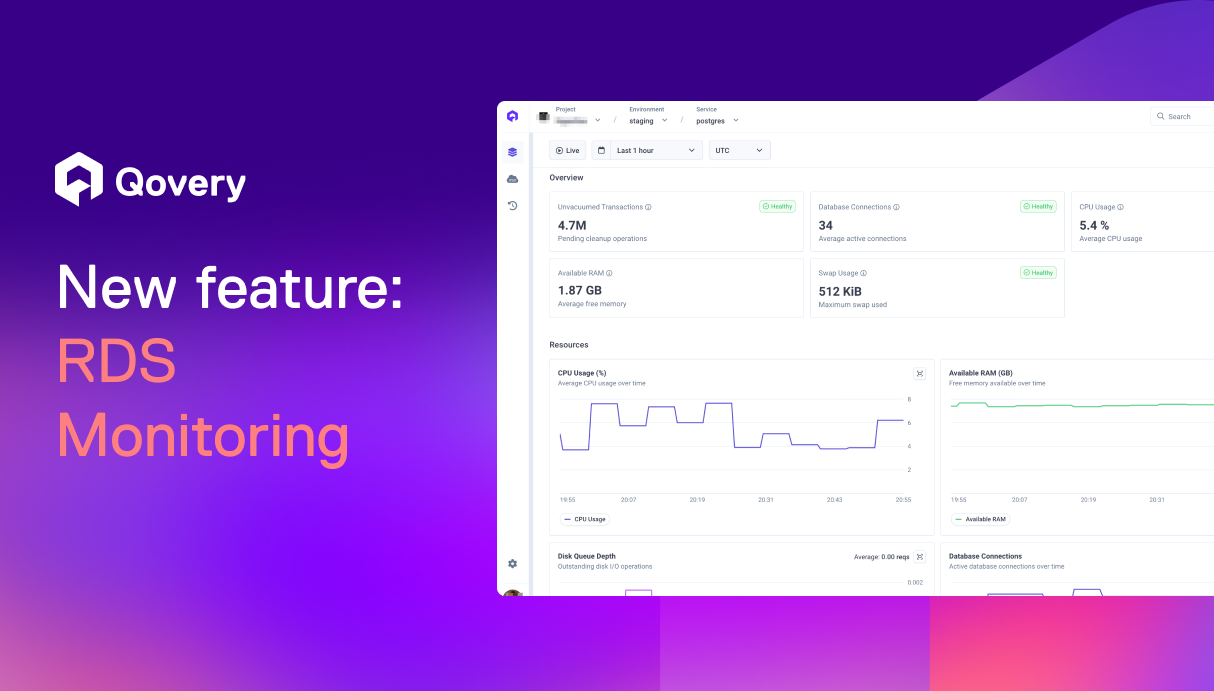


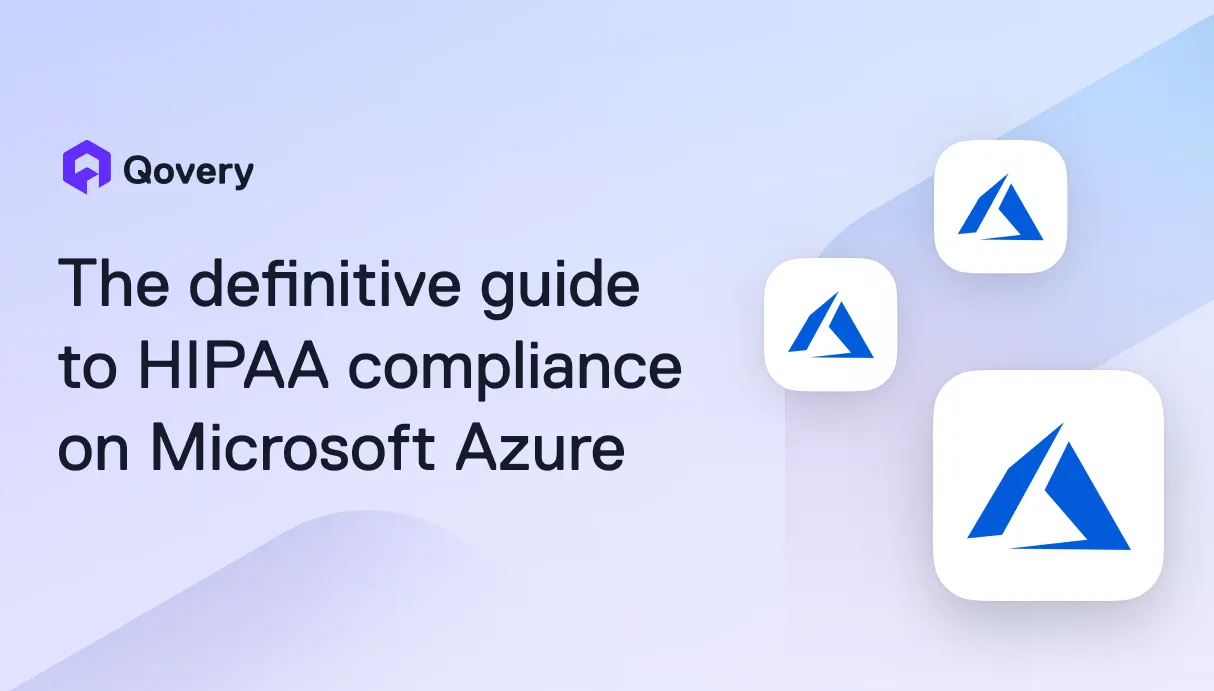
.webp)
